Forthcoming new and grooving wines
Natural Burgundy, Napoleon’s favourite tipple (sort of), rare volcanic gems, tiny production single vineyard Barolo, a natural Retsina (yes!), a cool Malbec-dominated wine from a high vineyard and (drumroll, please)…our first Hungarian wine!
Romains of the day
The Sarnin-Berrux winery is located in the beautiful village of Monthelie, perfectly situated in the Côte de Beaune, on the route des Grands Crus. Jean-Pascal & Jean-Marie, inseparable and complementary, sensitive to environmental protection, produce wines with selected organic grapes, essentially from the Côte de Beaune ; a process as pure as possible: unrelenting work in the vines during the harvest using only small boxes for the delicate transport of grapes to the winery, a gentle pressing, and above all, no additives, fining or filtering and the bare minimum of sulphite protection allow them to produce very fine and very mineral wines. The formula is straightforward – organically grown grapes, hand-harvested fruit, native yeast ferment, no enzymes, no additives, elevage on the lees, no filtration, no fining and total sulphur less than 30 ppm (considerably less on the red).
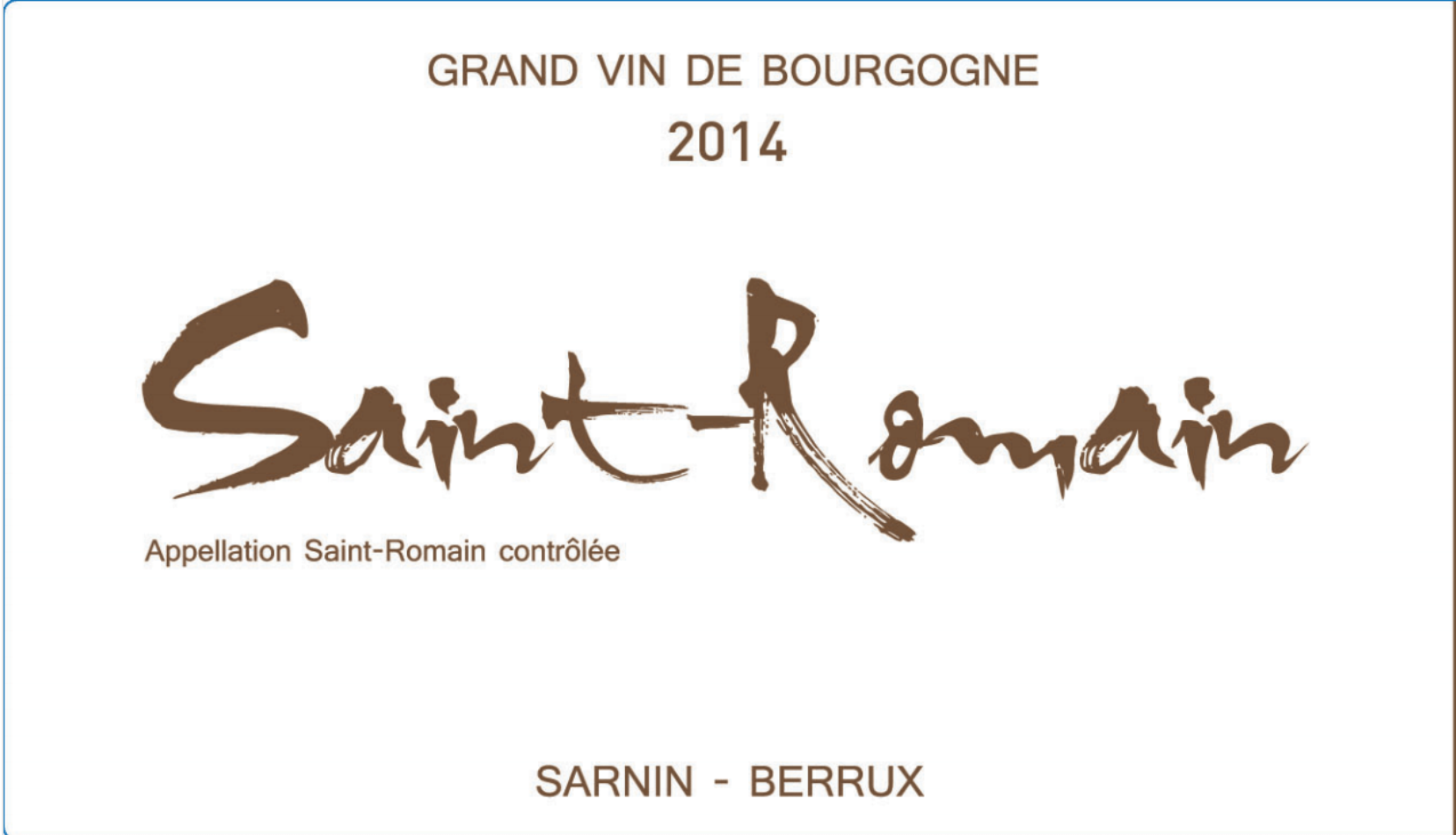
2014 Saint-Romain Blanc
2014 Saint-Romain Rouge
Napoleon’s special brew (brewed in Lazio)
Andrea Occhipinti was able to rent and purchase 4 hectares of vineyards planted in the 1990’s, which lie 450 metres above sea level on the volcanic slopes of Bolsena Lake, the biggest volcanic lake in Europe. Situated just one hour north of Rome, the lake provides a unique microclimate that together with the particular terroir and his objective to preserve and promote the local indigenous varietals, Aleatico and Grechetto Rosso, produce wines with the flavour of tradition and the effervescence of innovation. Gradoli is on the west bank of Bolsena, 15-20 minutes’ drive from the borders with Tuscany. The Romans call the region “Tuscia” (due to its proximity with Tuscany indeed) and it is traditionally part of the Maremma district – aka Maremma Laziale.
The Alea Viva is pure Aleatico Rosso, macerated for 15 days on skins and then undergoing spontaneous fermentation with indigenous yeasts in big cement vats. No chemicals, enzymes or oenological additions here! Matured for 18 months in cement and two months in bottle before release. Nothing added other than a little sulphur before bottling. It has gorgeous aromatics of rose petal/potpourri, anise, chocolate-covered cherries, and a touch of reduction. On the palate, bright and persistent acidity, red plum and plum skin, potpourri, cherry preserves. Napoleon supposedly loved this grape when he was exiled on Elba – and so do we!
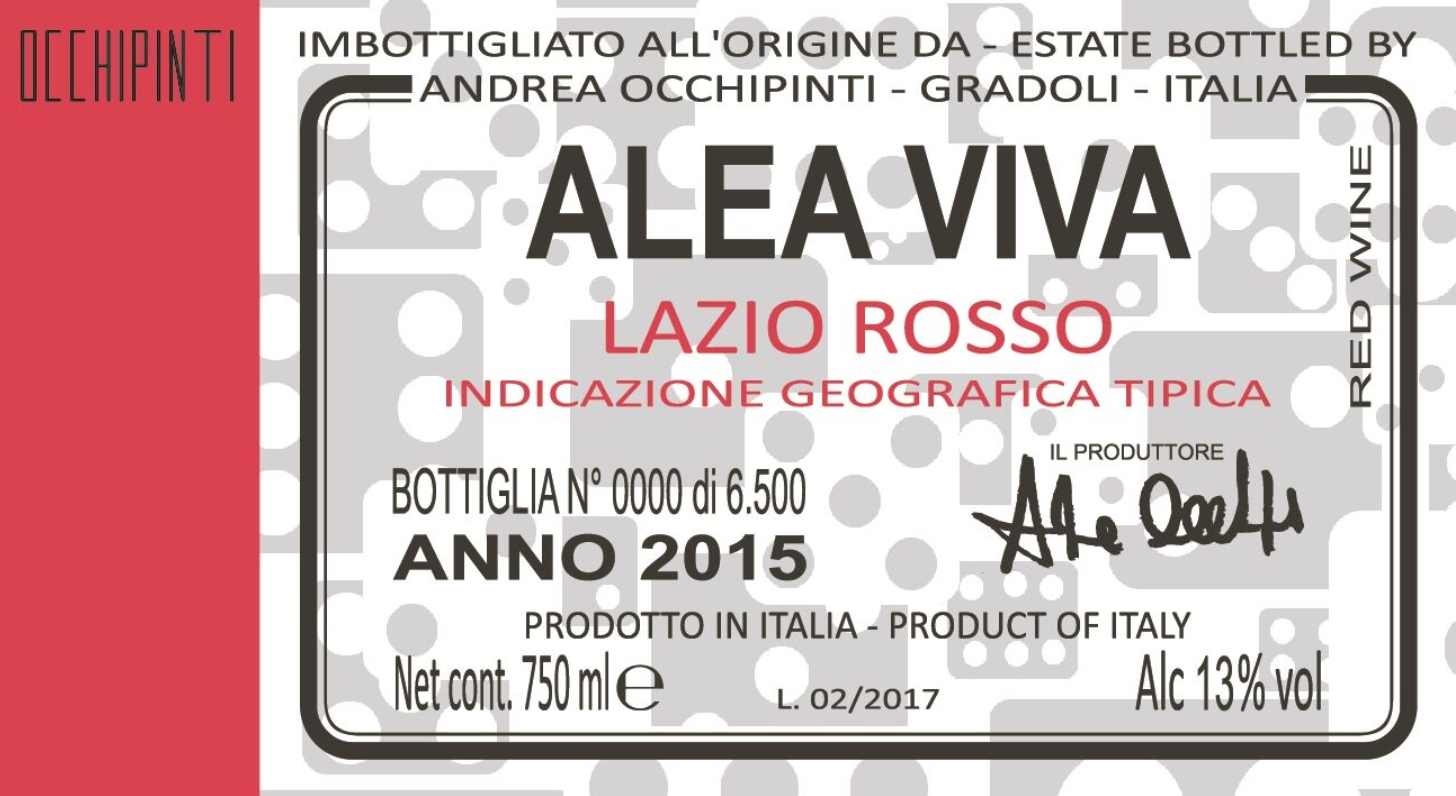
2015 Andrea Occhipinti Alea Viva Rosso
Aeolian sharp
The history of artisanal winemaking in the Aeolian Islands off the coast of Sicilia essentially begins with five Spanish families, one of which is Caravaglio. These noble pioneers were invited to travel to these wild, volcanic islands in the early 1500s to develop agriculture.
Thus, for more than 500 years, the Caravaglios have cultivated wine grapes on Salina and Lipari, establishing early on the traditions and practices that would be followed for generations. Antonino Caravaglio’s ancestors were certainly among the first to partner with Venetian traders bearing rootstock from Greece, planting the original Malvasia delle Lipari and Corinto Nero vines.
Few vine-growing regions in the world can claim such an unbroken chain of organic cultivation. Grapes on these wind-swept hills have always been cared for naturally, cleansed by the sea-salty air of the Mediterranean and protected by the island’s mineral soils, which also kept phylloxera at bay.
Antonino Caravaglio was among the first artisans in Sicily to become organically certified in the 1990s; historically, his family’s vines and caper plants for centuries have been farmed according to organic principles. Grapes are harvested by hand and fermented with indigenous yeasts in temperature-controlled, stainless steel tanks. White wines are aged in tank on fine lees for two to three months; red wines are aged on fine lees in a combination of 500L French oak casks and tank for one month. Very little sulphur is added during the winemaking process, to ensure the grapes’ natural flavours are allowed to express themselves fully.
The Malvasia Salina is from organic vines grown in volcanic soils. Beautiful, dry, aromatic white wine with peach blossoms, lemon zest, spring flowers, grapefruit, green melon and mouth-watering acidity.
Occhio di Terra Salina is Malvasia delle Lipari, Nerello Mascalese and Catarratto. This wine is fermented with native yeasts only and rests on its skins for a period of time gaining colour and tannic structure. The ageing takes place in terracotta amphorae for 6 months. A variety of aromas emerge from this wine: chamomile, herbs (basil, rosemary, dried mint), followed by ripe yellow pulpy fruit such as loquat and mango. A tangy wine, supremely satisfying with a long persistence in the mouth and a wine that ticks so many of our nerdy boxes: Island wine; volcanic wine; new grape variety wine; skin contact wine; amphora wine.
Made from old Corinto Nero and Nerello Mascalese from the islands of Lipari and Salina, the Salina Rosso spends just two days on skins to derive its dark pink/ruby red vivid colour. The aroma expresses wild roses and black cherry scents, the wine is brilliant and clear in the glass. In the mouth there is a distinctive savoury presence, almost a smoky quality and perky red fruit flavours.
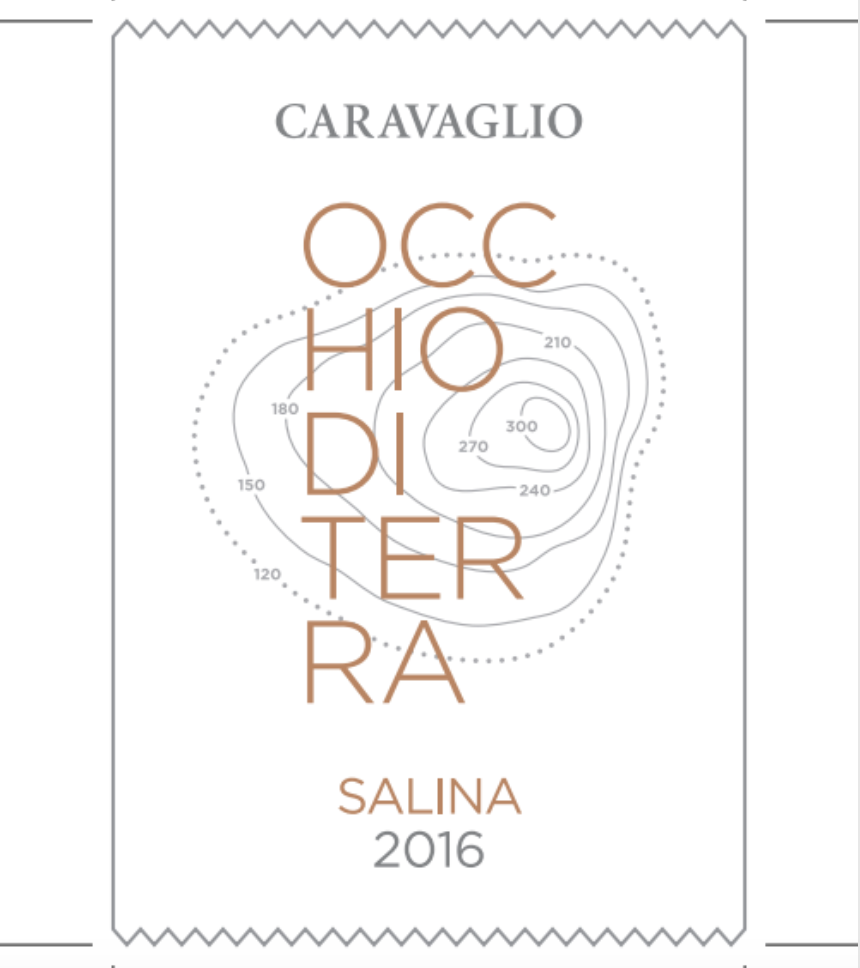
2016 Caravaglio Occhio di Terra Malvasia
2016 Caravaglio Occhio di Terra Salina
2016 Caravaglio Occhio di Terra Rosso
Baroque and Rollo
The wine of kings and the king of wines. That’s how Barolo is defined.
Ferdinando (Principiano)’s oldest Nebbiolo grapes ripen on two acres where great care is taken in the vineyards. The vines are on the south-west slope of Boscareto (approx. 400 m above sea level, in Serralunga d’Alba.
Ferdinando used to thin out the canopy to increase the concentration; now he prefers to let it grow. He has also changed his approach in the winery where he now practices whole bunch maceration rather than the traditional destemming. The grapes are pressed underfoot, and a relatively short maceration by Langhe standards (15 days), completes vinification. Fermentation takes place in 10 hl wooden tanks without inoculated yeasts and without sulphur addition and ranges from 40 to 90 days depending on the year. The wine is then transferred to 30 hectolitres oak barrels and matured for three to four years.
An intense bouquet of liquorice and eucalyptus jumps out of the glass; on the palate, the wine is both juicy and zippy and green. It’s very lively and vital, continuously evolving in the glass and making a second and third taste compulsive and rewarding.
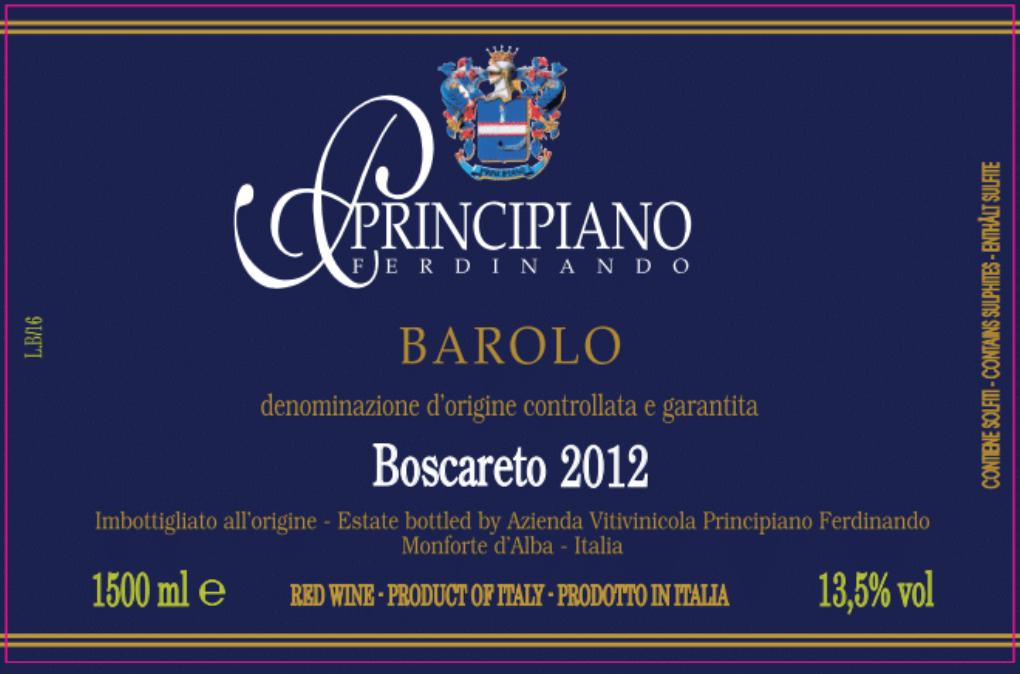
2012 Principiano Barolo Cru Boscareto DOCG
Resin-ant Greek wine
Dimitris Georgas is a 4th generation vine grower and winemaker. He took over the family vineyards almost 20 years ago. Since then the vineyards have been certified organic. The 6 ha vineyards are spread throughout the region of Mesogaia (Ancient Greek name Meso =in the middle + Gaia= the land of Attica peninsula (Athens area). Mesogaia is one of the oldest wine regions of Greece, specialising in the indigenous Savatiano white vines, where PGI Attika wines are produced. The dominant features of this dry climate are the gently sloping hills, low rainfall and temperate climate (located between two seas). More locally, there are big olive trees between the vineyards, as well as fig and almond. Descriptions of viticulture and wines date back from 300 BC
The family vineyard is scattered over twelve small, but discrete parcels on dry clay marls soils. The oldest vines are the dry-farmed Savatiano (50 years +). Biodynamic preparations have been applied in some of the vineyards since 2000.
Retsina is the catch-all term for resinated wines. The tradition originates in the Attica wine region, where the fresh pine resin of the native old pine trees in Attica (Pinus Halapensis) was introduced into the must of the white Savatiano before fermentation. Retsina and non resinated Savatiano dry wines had a strong century long history, being the key player in the local white wines of Athens between 1850-1980. In this case the grapes are fermented in stainless vats with native yeasts. The fresh resin, collected from local pines in late summer, is added to the fresh must before fermentation and stays there until the first racking (2-3 months).
Premium quality Retsina carries the characteristic balsamic aroma of pine which, however, does not inhibit grape aromas. The imperceptible sense of bitterness leaves a refreshing aftertaste and makes Retsina the ideal companion of the flavourful dishes of traditional Greek cuisine.
There is no barrel ageing. Retsina is best fresh; it takes about a couple of months after bottling to begin to develop the secondary aromas and also to soften the tannins. No sulphur is added to this wine.

2016 Georgas Retsina of Mesogia
Aude one in
Gilles Azam is the vigneron at Domaine des Hautes Terres comprising several tiny parcels of vines located throughout the terroir of Limoux in the commune of Roquetaillade. The vines range from 450-600 metres above sea level which helps to confer freshness and finesse to the wines. Soils are variegated – marly- clay with sandstone embedded with fossils Farming is conducted according to organic principles.
The Maxime is a blend of Malbec and Merlot (in other vintages the Cabernets feature in varying quantities). Yields are a very reasonable 40 hl/ha, harvest is manual and vinification is traditional with native yeasts in cement cuvee. The wine is then aged for 12 months on its lees. This red has a lovely natural energy and fruity freshness. The aromatics are delicate -pointing towards the Atlantic with the suggestion of red fruits and spice, and hinting at the Languedoc with the delicate sensation of dried herbs. Suppleness and finesse are the watchwords here.
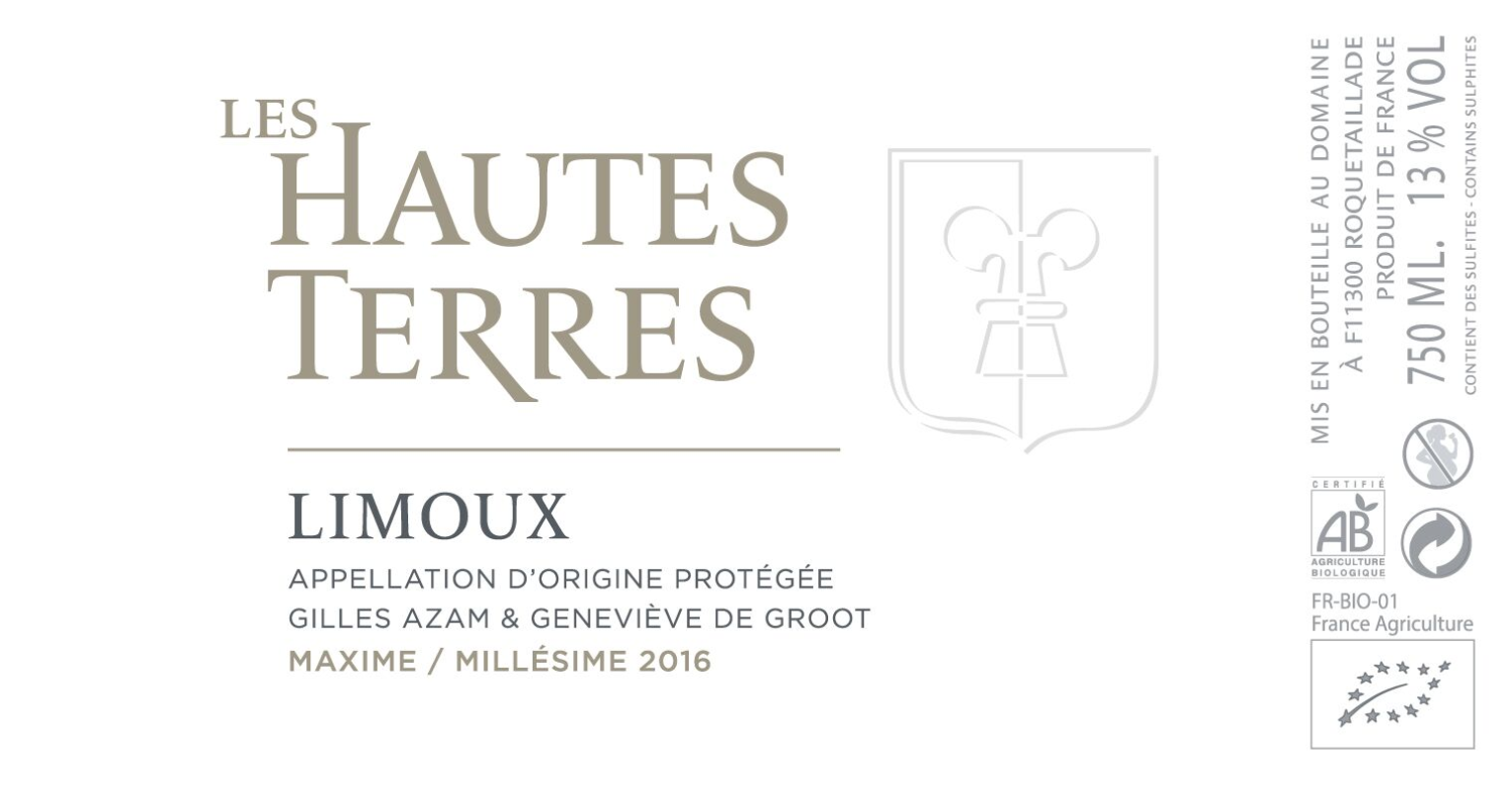
2016 Hautes Terres Maxime Rouge
Hungarian thirst quenchers
The undisputed king of Hungarian vineyards, Mount Tokaj is located to the north of the country, 200 km east of Budapest. This legendary location produces exceptional wines, protected since 1772 by the first appellation of origin awarded in the entire world.
The Royal Imperial Estate of Tokaj-Hétszolo owns beautiful land and cracking vines on the southern slopes of Mount Tokaj since 1502. No surprise, then, that it has attracted the attention of the greats of the wine world for over 5 centuries!
The creation of the estate owes nothing to chance: the Garai family simply selected the best 7 parcels of the land in the region, hence the name – Hét Szolo means “7 parcels of vineyard” in Hungarian. Thence followed a series of prestigious owners, including Gaspar Karoli, translator of the Bible into Hungarian, Gabor Bethlen, prince of Transylvania and the Princes Rakoczi, a grand aristocratic family. The Habsburg royal family finally took possession of the vineyard and Tokaj-Hétszolo became an Imperial Estate in 1711. It was to remain the property of the Austro-Hungarian Crown for almost two centuries.
Following a turbulent 20th Century, the Tokaj-Hétszolo Estate became one of the Michel Reybier vineyards in 2009, joining Cos d’Estournel, Saint-Estèphe Grand Cru classé, Château-Marbuzet and Goulée Médoc in their portfolio.
The terroir is special. The volcanic rock here is covered by a particularly thick layer of loess, and the directly south-facing side of the hill benefits from optimum levels of sunshine. The parcels overlook the misty valley where the Rivers Tisza and Bodrog meet, and enjoy the perfect microclimate for botrytris cinerea, which produces the much-prized noble rot.
Ecological responsibility is at the forefront of the winery’s objectives. There wasn’t any agriculture at Hétszolo between the 1950’s and 1990 – in fact throughout the era of massive agrochemical use of Soviet regime. When the vineyards were replanted in 1991 sustainability was put to the fore. To make organic culture more official, Hétszolo began the conversion process for organic certification in 2009 with the label of Hungária Ökogarancia, an official organic certifier in Hungary.
Today all the 55 hectares of vineyards of the estate are cultivated strictly in organic way. Minuscule amounts of copper and sulphur are employed. Instead of systemic chemicals they use more natural products like orange oil, baking powder and other substances. No artificial fertilizers, nor herbicides, are used and natural pest management is practised using predatory insects. Soil management is done by means of composting and diverse cover crop. Ecological islands have been established next to vine parcels to increase biodiversity. Allied to these changes is a move towards more natural wine making, using indigenous yeasts and spontaneous fermentation.
The dry wine is 100% Furmint from the south-facing Nagyszolo & Hétszolo single vineyards on thick loess soil with more complex volcanic subsoil. Yields are around 35 hl/ha, and the wine is fermented and aged for five months in stainless tanks with weekly batonnage. The nose is quite reserved and a touch balsamic, but the palate is striking with lime, pear and green apple notes. Elegant acidity and minerality. The wine benefits from not being served too cold.
Late Harvest is an important category nowadays for Tokaj. At Hétszolo they use mostly use shrivelled berries with no botrytis, the aim being to keep the wine fresh and fruity and easy to drink. This version comprised Furmint 70% + Hárslevelu 30% from low-yielding vines (25hl/ha) and like the dry wine is fermented in tank. On the nose we find citrus, elderflower, linden blossom and fresh tropical fruit notes. The same fruit comes through on the palate along with minerality and lovely balancing acidity.
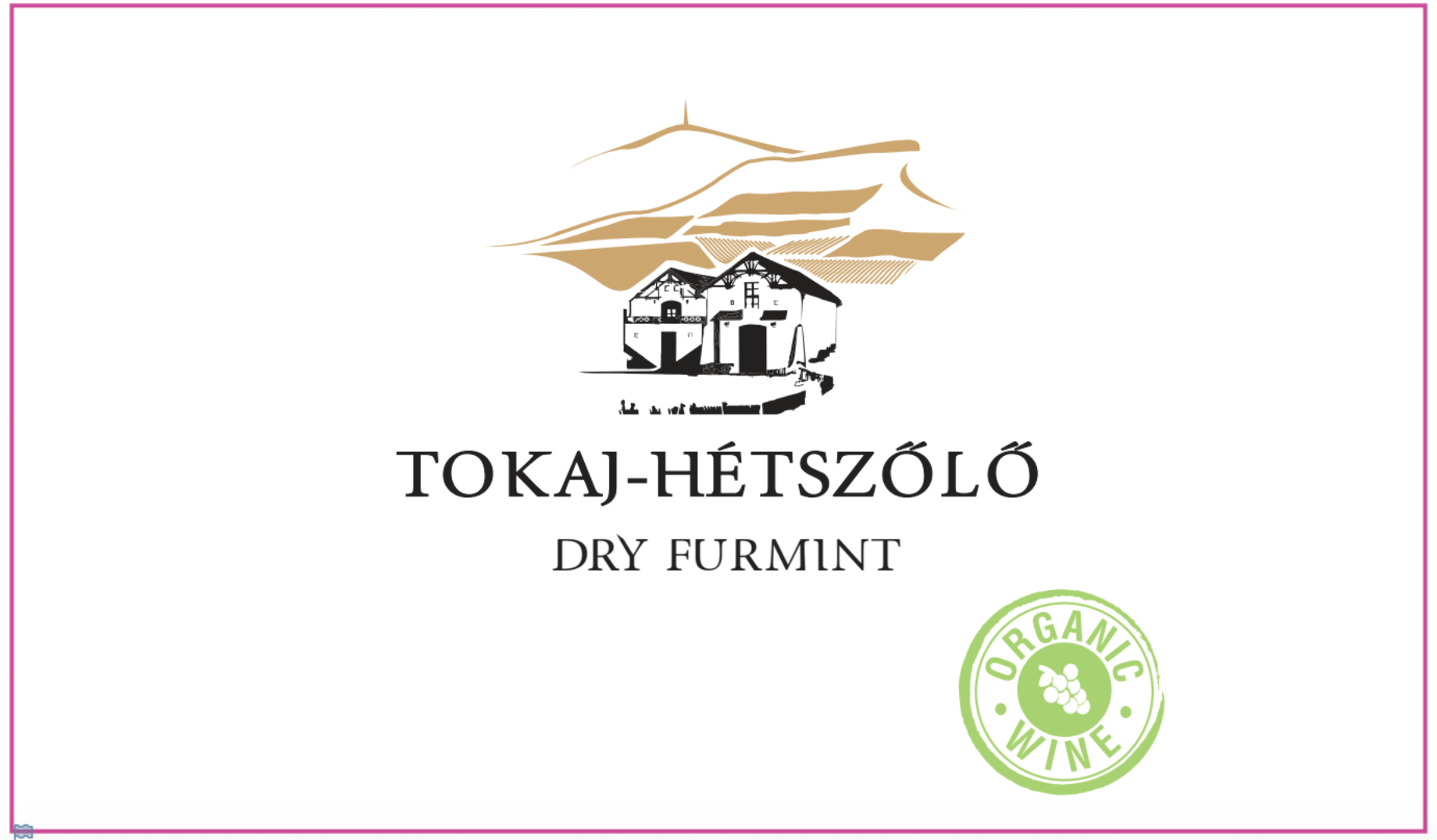
2016 Hétszolo Tokaji Dry Furmint
2015 Hétszolo Tokaji Late Harvest
Interested in finding out more about any of the wines featured? Buy online here or contact us directly…
Retail: shop@lescaves.co.uk / 01483 554750

